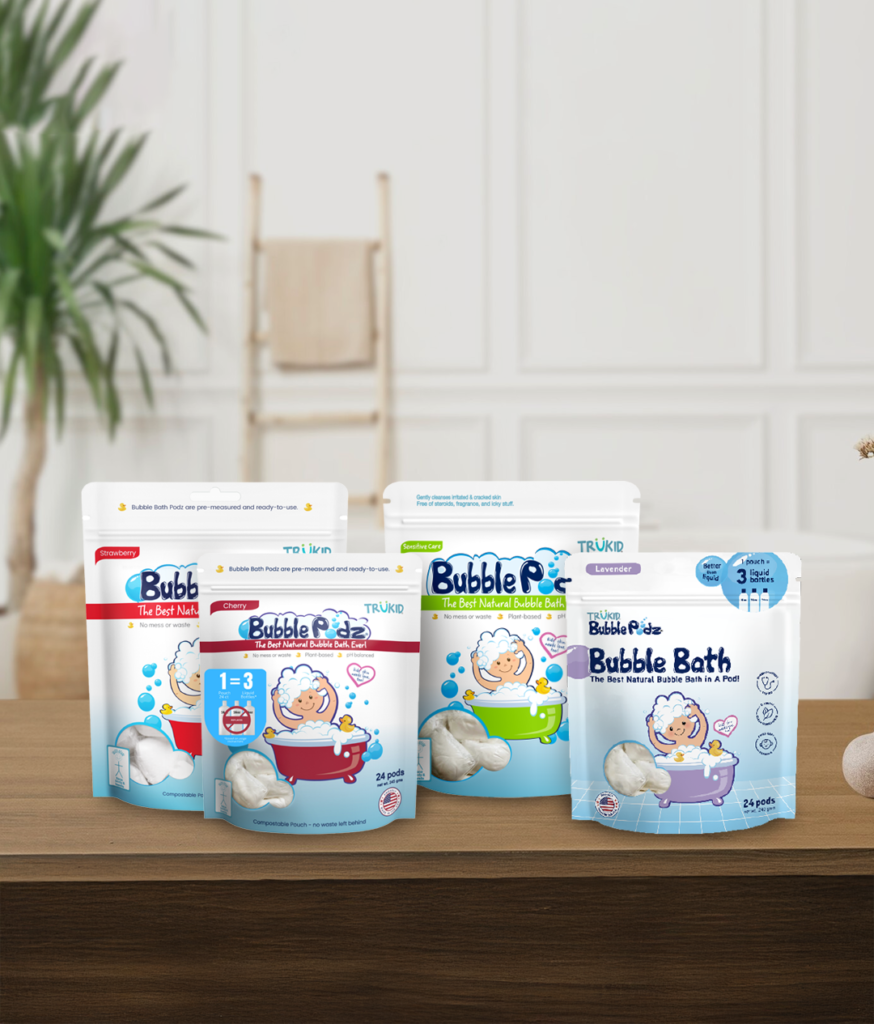Eczema is one of those words that can bring up a lot of anxiety for people. You probably immediately asked yourself: Where does it come from? Is it treatable? What are the best treatments?
When it comes to your kids, it’s even more important to have accurate, clear information about the symptoms, triggers, and treatments for eczema so that you can make your little one as comfortable as possible.
First off, what does it look like?
Before we get into the details, it’s good to know that eczema refers to a cluster of dermatological conditions, and there are a few different types. The common ones are seborrheic dermatitis, contact dermatitis, atopic dermatitis, and dyshidrotic eczema. Each type may look a bit different on each child, while age will also influence the symptoms as well.
In general, though, eczema in children is identifiable because goes beyond the occasional rash or skin irritations that are common in the early years. Usually, the symptoms of eczema at any stage include dry, itchy, red, and flaky or scaly skin, but there area few distinct characteristics to look out for. Here’s a breakdown of the symptoms in the first year.
Early Infancy – 2 to 6 months
If eczema pops up at this life stage, it looks like red, itchy skin on your baby’s cheeks, neck, chest or back. The rash notably doesn’t tend to develop in the diaper area, so you won’t likely confuse it with diaper rash.
Infancy – 6 months to a year
At this stage, your little one is probably starting to roll over and crawl, which means that eczema is going to start popping up on elbows, knees, and their chest. If there is infection, the affected areas may also become more bumpy and raised than during the first 6 months.
Childhood and on
Once kids get a little bit older, outbreaks start to become more predictable. Dry, flaky, sometimes scaly skin appears on elbows, hands, and knees but can also develop on the scalp, ears, or other body parts. That’s because as kids develop more advanced motor skills, these areas become especially prone to regular contact, and it can be difficult to prevent your child from rubbing or scratching the area.
What Are The Root Causes of Eczema?
Overall, eczema is an issue of the immune system. Normally functioning immune systems ensure that our skin acts as a defense against outside threats like viruses and bacteria while allowing in appropriate amounts of water and maintaining a healthy level of oil. For those with eczema, however, this defense system isn’t acting normally, leading to overreactions or flare-ups that can be painful and itchy.
Unfortunately, there is no one scientific conclusion that tells us what causes eczema. Most research suggests that it may be a combination of heredity and environmental triggers that increases the likelihood for skin problems like eczema.
In terms of genes, children who’s parents have suffered from allergies, asthma or hay fever are at a higher risk for eczema, and the children themselves are twice as likely to develop similar conditions. Interestingly, children born to older women are more likely to suffer from eczema, though health professionals are unsure of the reason.
Treatment and Next Steps
As a parent, it may bring you some comfort to know that because eczema is so widespread, there is a huge interest in research, particularly in treatment options. In fact, one out of every ten children in the US suffer from eczema, and there are scientists dedicated to finding best practices to relieve the symptoms and alleviate pain.
Here are a few of the most effective treatment options:
- FDA approved options. Many families work closely with their child’s physicians to choose the best medication to manage symptoms and reduce discomfort. The majority of medicated treatments on the market are corticosteroids that can be applied topically, however, some recent developments have also been made involving enzymes, antibodies, or healthy bacteria.
- Non-medicated ointments. Understandably, many parents are hesitant to lather up their little one with the newest medicated creams on the market. After all, a review by the FDA can’t always predict the long-term effects of a treatment, leading many parents to look for alternative options. Companies like TruKid have spent many years creating the best natural eczema products to help soothe, protect, and prevent flareups.
- Avoid triggers. The best care that you can provide for your child is preventative, so it’s crucial to figure out those environmental factors that lead to breakouts. Children with eczema are often especially sensitive to perfumed lotion, soaps, and sunscreens, as well common chemicals like chlorine or pollution. Using only all-natural products with essential oils instead of perfumes will dramatically reduce the risk of breakouts and irritations.
Overall, the best thing to remember is that eczema is a little bit different for every child. Only by educating yourself on the details of the condition and becoming aware of your child’s unique needs can you provide your little one with the best treatment plan.
Newsletter
Sign Up For Our Newsletter & Get the Latest Information
This article is intended solely for informational purposes and should not be considered a source of medical advice. The information presented in this article is not a replacement for, nor should it be relied upon as, professional medical guidance. Every individual’s health and medical circumstances are unique. What works or is suitable for one person may not be the same for another. Any decisions related to your health should be made with consideration of your specific health condition, medical history, and the guidance of your healthcare professional.
